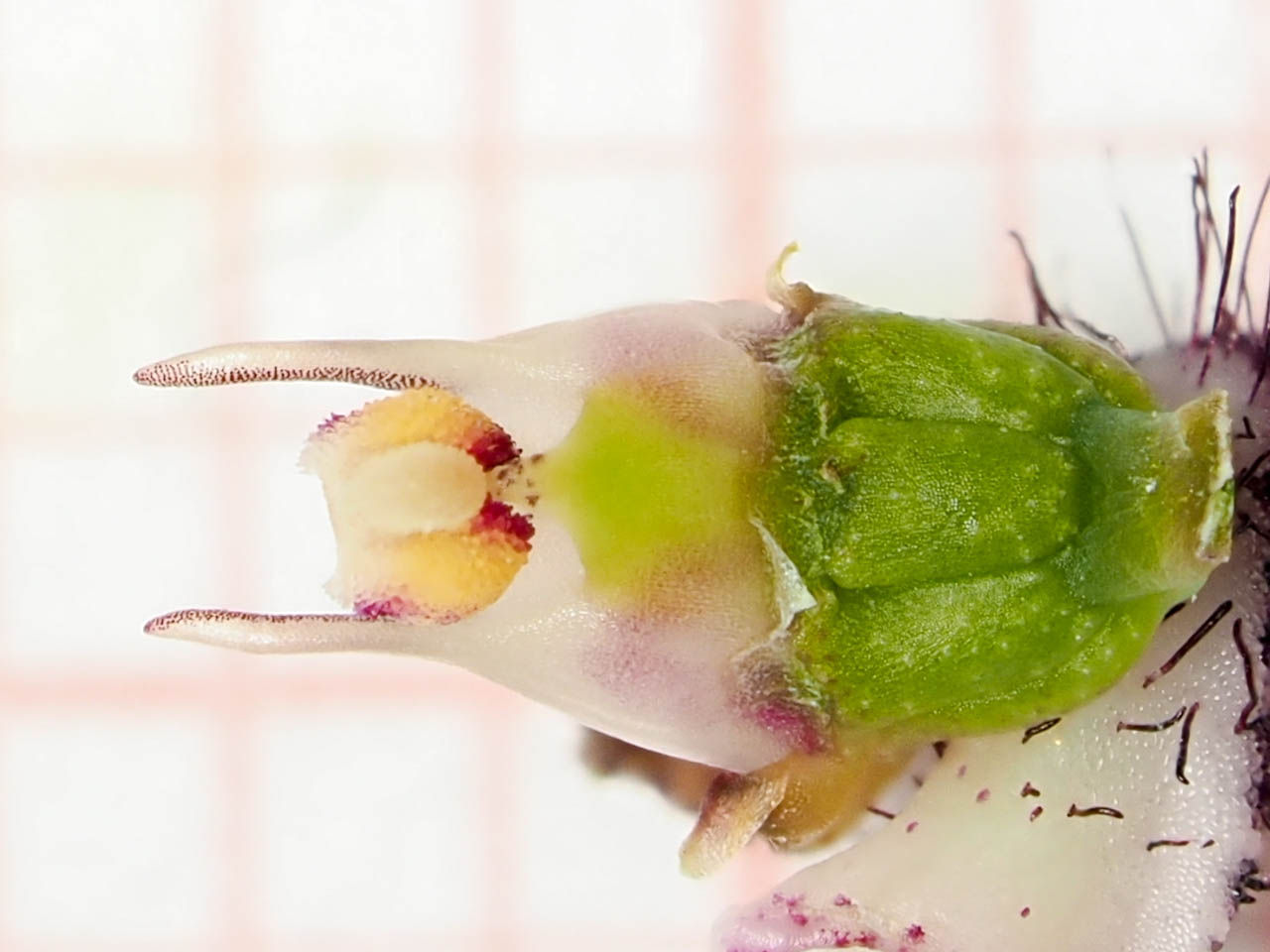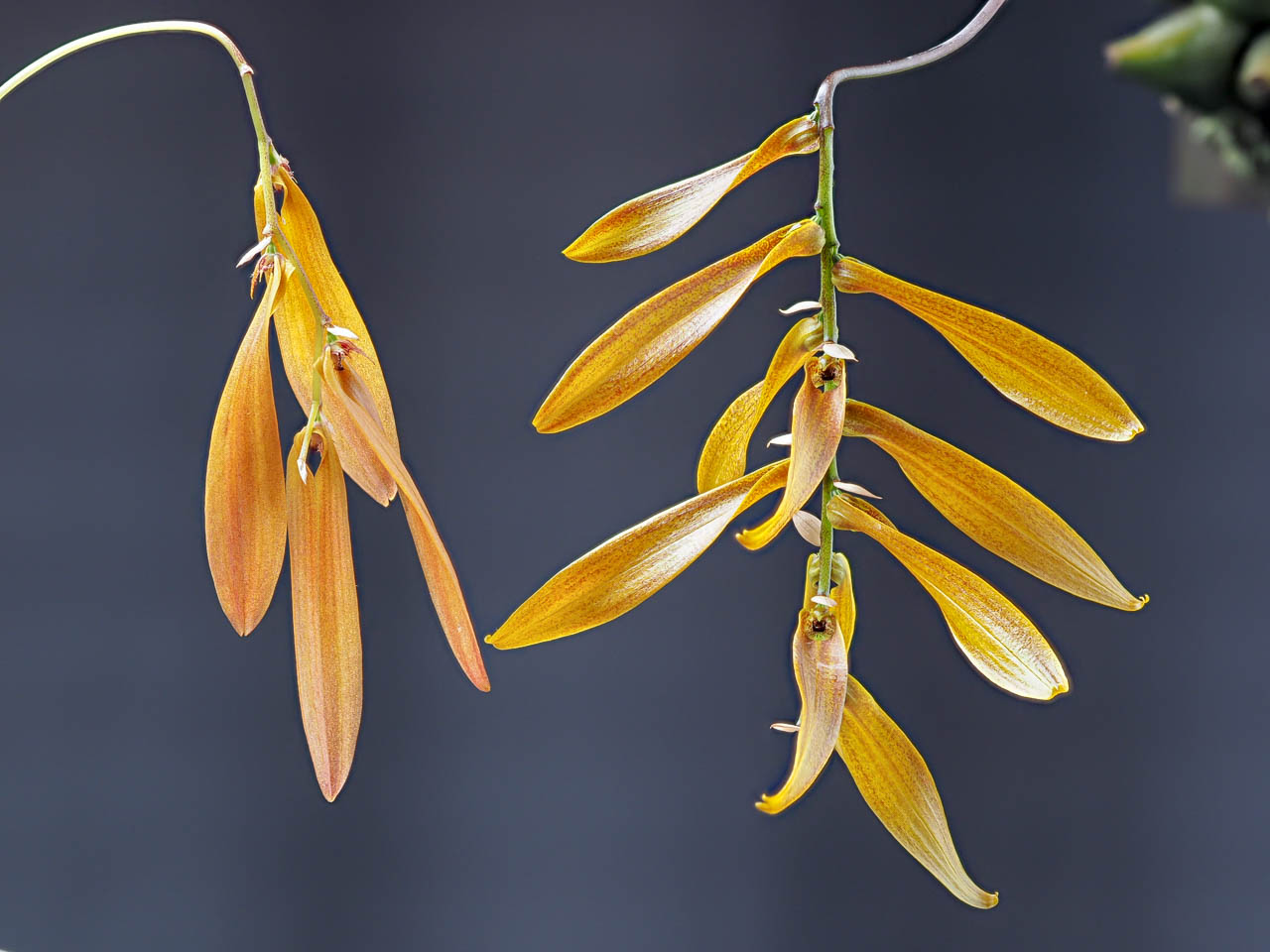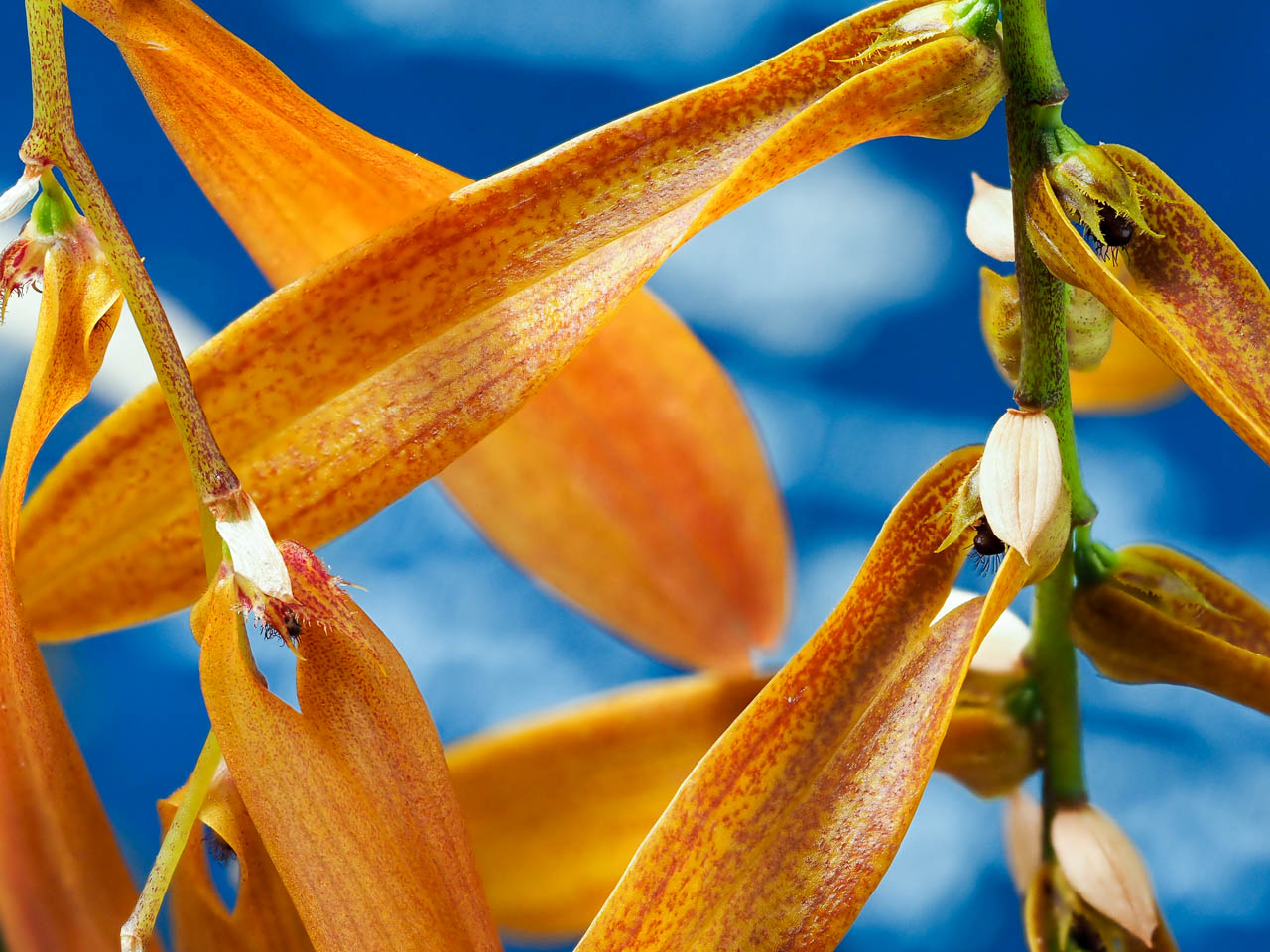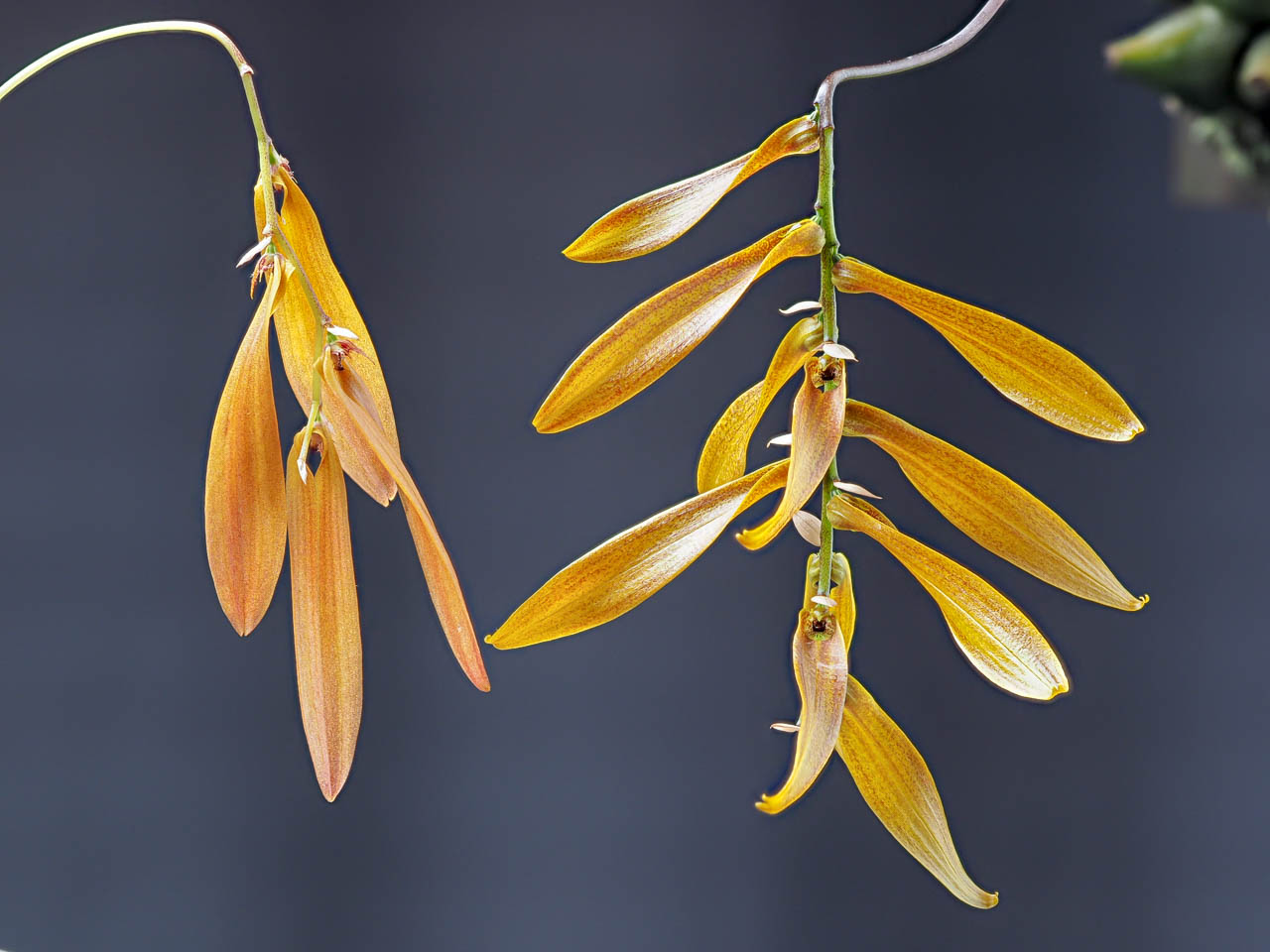naoki
Well-Known Member
This is from Tropical Exotique. I have to do a bit more reading, but I think it is correctly ID'd. But let me know if it is not. Below, I added a couple of my observations from comparison to the illustrations of related species in Swiss Orchid Foundation. What I mentioned below may not be useful to the identification, and the difference I see may be just specific to these individuals.



Lateral sepals and the flower bract were removed. The hairs on the dorsal sepal and petals are more concentrated on the tip half, and there are more on the adaxial surface.

In the following dissected photos, the grid in the background is metric (1mm).
Right side: lateral sepals. Left: adaxial surface (i.e. facing the column, front side), right: abaxial surface (facing ovary, back side).
Left side (from top to bottom): flower bracts, dorsal sepals, petals, column and lip.
For the bracts, dorasl sepals and petals, left side is the abaxial surface, right side is the adaxial surface.
For the column+ lip, the bottom one has the petals.
Note the fairly fat and big flower bracts. The bracts of B. refractum and B. wallichii seems to be smaller. Also the dorsal sepals are pretty fat, unlike the slim/narrow dorsal sepals of B. wallichii

Lip from above

Lip from the side. Some illustrations show that the profile of the lip is quite different from B. wallichii, which seems to have elevated side-lobe like structure (so it looks taller closer to the hinge). Also the tip of the lip seems to be fatter with B. wallichii.

Lip from below

Column from the above. I think the yellowish and purplish part is a part of anther cap, which looks pretty cool.

Column profile view. The lip is removed.

Column from below. The green thing looks pretty cool. I'm not sure what it it.

Comparison against B. cf refractum (left), which I posted in this thread. Also note that the stem part of the inflorescence is straight in the B. tripudians, but it goes zig-zag with the right plant, and the flowers hang down instead of sticking out side way.

Note the difference in the bract sizes. Also, you can see the difference in the shape of dorsal sepal. B. tripudians has much fatter dorsal sepals, but the dorsal sepals of the right plant are longer (relative to the column or lip).




Lateral sepals and the flower bract were removed. The hairs on the dorsal sepal and petals are more concentrated on the tip half, and there are more on the adaxial surface.

In the following dissected photos, the grid in the background is metric (1mm).
Right side: lateral sepals. Left: adaxial surface (i.e. facing the column, front side), right: abaxial surface (facing ovary, back side).
Left side (from top to bottom): flower bracts, dorsal sepals, petals, column and lip.
For the bracts, dorasl sepals and petals, left side is the abaxial surface, right side is the adaxial surface.
For the column+ lip, the bottom one has the petals.
Note the fairly fat and big flower bracts. The bracts of B. refractum and B. wallichii seems to be smaller. Also the dorsal sepals are pretty fat, unlike the slim/narrow dorsal sepals of B. wallichii

Lip from above

Lip from the side. Some illustrations show that the profile of the lip is quite different from B. wallichii, which seems to have elevated side-lobe like structure (so it looks taller closer to the hinge). Also the tip of the lip seems to be fatter with B. wallichii.

Lip from below

Column from the above. I think the yellowish and purplish part is a part of anther cap, which looks pretty cool.

Column profile view. The lip is removed.

Column from below. The green thing looks pretty cool. I'm not sure what it it.

Comparison against B. cf refractum (left), which I posted in this thread. Also note that the stem part of the inflorescence is straight in the B. tripudians, but it goes zig-zag with the right plant, and the flowers hang down instead of sticking out side way.

Note the difference in the bract sizes. Also, you can see the difference in the shape of dorsal sepal. B. tripudians has much fatter dorsal sepals, but the dorsal sepals of the right plant are longer (relative to the column or lip).

Last edited:














































